I have a requirement to produce an "flattened" version of data for export, in which the customer wants the related table rows to appear as columns. We're using Entity Framework 4 & .NET 4.0
The customer has the ability to create custom questions for their events. There may be zero to infinite questions. Users attending the event may answer none, some or all of those questions.

What I need to produce is like this:
User 1 User 1 info field A User 1 info field B User 1 Answer to question A User 1 Answer to Question B
User 2 User 2 info field A User 2 info field B User 2 Answer to question A User 2 Answer to Question B
Creating the user info portion of the result set is not problem, but I'm stumped on how to take my related questions and answers, i.e.:
from urf in tblUserRegistrationFields.Include("tblRegistrationFields")
where urf.UserID == eachUserID && urf.tblRegistrationField.EventID == thisEventID
select new
{
FieldLabel = urf.tblRegistrationField.FieldLabel, //this is the question name
value = urf.value //this is the user's answer
}
And add those to my user select statement as individual columns, i.e.:
var users = from u in context.tblUsers
<snip>
select new
{
UserID = u.UserID,
<snip>,
CustomQuestionA = AnswerA,
CustomQuestionB = AnswerB,
... etc.
};
Ultimately I need to create a grid which I can then export to their desired format and I'm open to non-LINQ solutions (although the purchase of 3rd party controls is not an option.) I suspect there is a way to leverage LINQ's grouping features, but I haven't been able to apply it to this scenario.